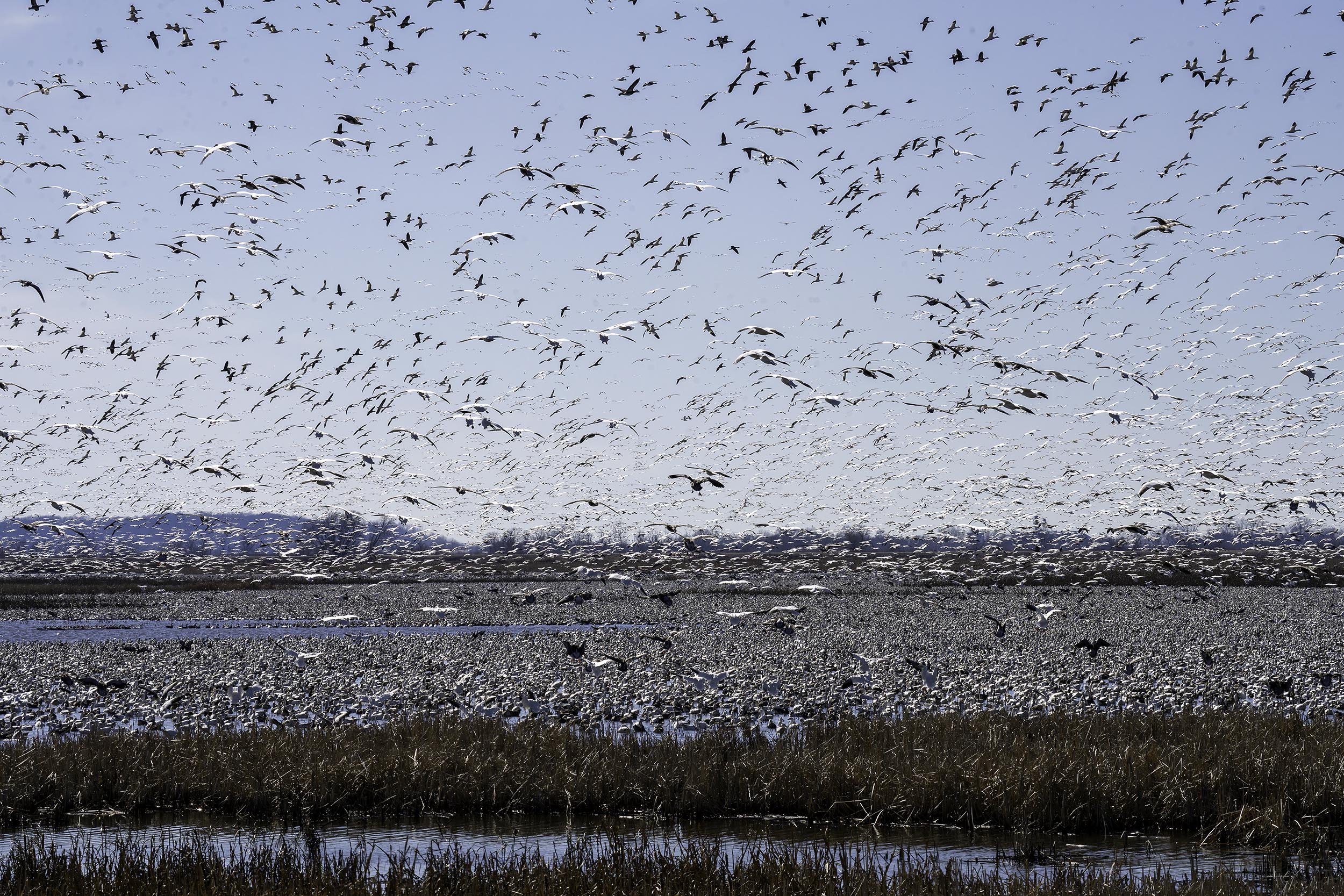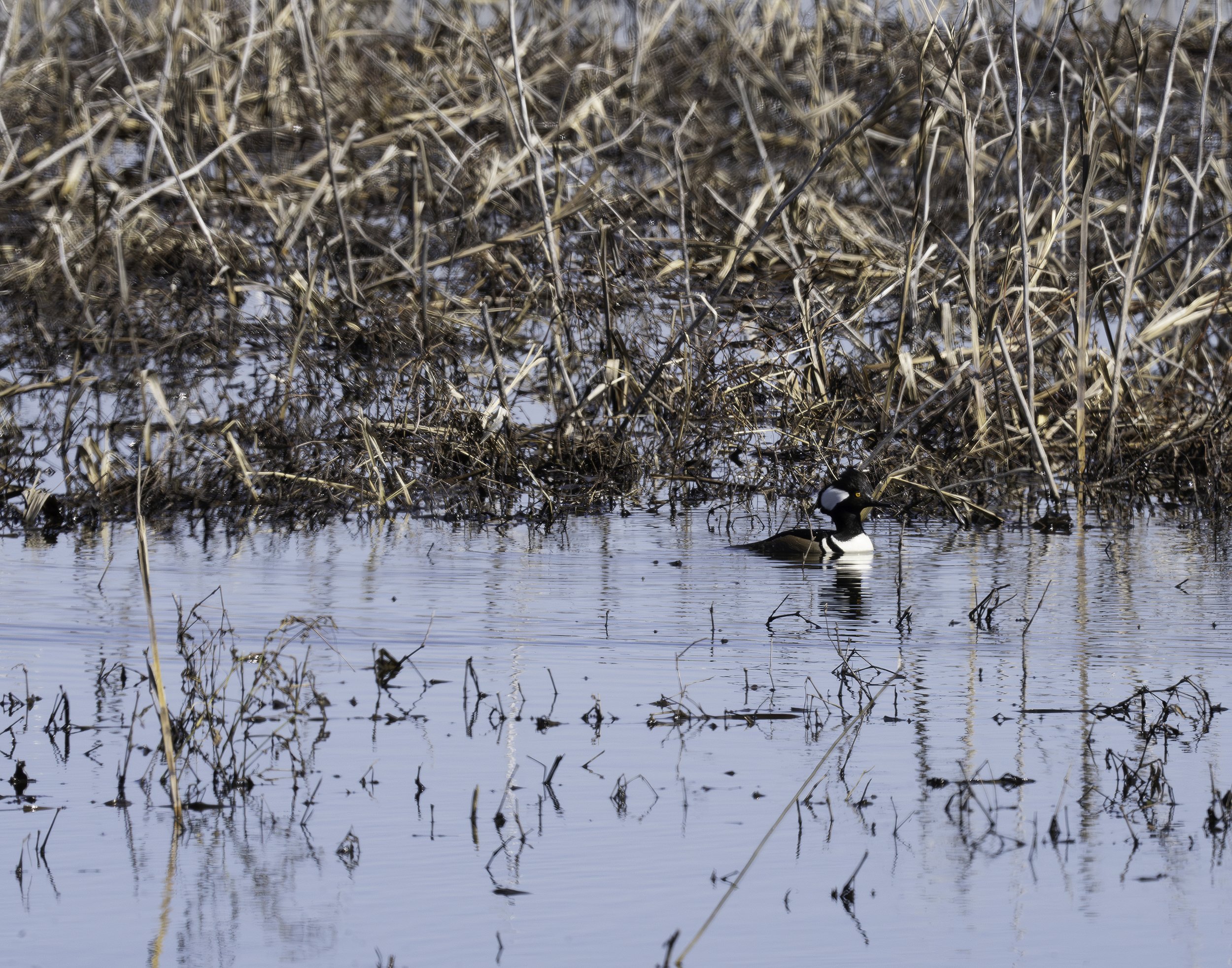Loess Bluff Awakens: A Guide to Spring Migrants.
A Blizzard of White: Witnessing the Goose Migration at Loess Bluffs:
Loess Bluffs National Wildlife Refuge, nestled in the rolling hills of northwestern Missouri, transforms into a spectacle of nature's grandeur during the spring migration. While the refuge hosts a diverse array of migratory birds, it's the sheer, overwhelming presence of snow geese that truly captivates visitors. These avian travelers, in numbers that can reach into the hundreds of thousands, create a breathtaking scene, a living, breathing testament to the power of migration. (official bird count for the week the photos in this blog post were taken showed 879,000+ geese on the marsh).
The arrival of the Snow Geese at Loess Bluffs is a sensory experience unlike any other. The air vibrates with their “honking” calls, a constant chorus that echoes across the wetlands. The landscape itself seems to shift and shimmer as vast flocks take flight, their white plumage creating a dazzling display. These birds, having journeyed from their wintering grounds in the south, find a vital resting and refueling point at Loess Bluffs before continuing their northward journey to their Arctic breeding grounds.
Loess Bluffs provides the perfect habitat for these migrating geese. The refuge's carefully managed wetlands, with their abundant food sources and safe resting areas, are crucial for the birds' survival. The geese arrive hungry, having expended considerable energy during their flight. They need to replenish their reserves quickly, feeding on the refuge's grasses, seeds, and aquatic vegetation.
Diving Deep, Flying Far: The Goldeneye's Seasonal Shift:
The Common Goldeneye, a striking diving duck with its distinctive golden eye and sharp, buzzy wingbeats, undertakes a fascinating migratory journey each year. These ducks breed in northern regions, including boreal forests and near the Canadian tundra, and as winter approaches, they migrate southward to find ice-free waters. Their migration takes them to coastal areas, large inland lakes, and rivers, where they can dive for aquatic invertebrates, crustaceans, and fish. While they may not gather in the massive flocks of snow geese, their presence adds to the diversity of waterfowl found in places like Loess Bluffs National Wildlife Refuge, where they can find temporary refuge during their seasonal travels. Their arrival and departure are tied to the freezing and thawing of waterways, making them a reliable indicator of changing seasons.
A Splash of Color: The Wood Duck's Woodland Realm
The Wood Duck, a jewel of North American waterways, brings a splash of vibrant color to wooded swamps and riverbanks. Unlike their open-water cousins, wood ducks are cavity nesters, preferring to raise their young in tree hollows near water. With their iridescent plumage, striking crests, and bright red eyes, males are a sight to behold, while females possess a subtle elegance. These ducks are agile fliers and adept at maneuvering through dense forests, foraging for seeds, nuts, and insects. Their unique nesting habits and preference for wooded habitats make them a beloved species among birdwatchers and nature enthusiasts, and their presence is a welcome sign of healthy riparian ecosystems.
Unlike most ducks, wood ducks are adept at perching in trees. They have sharp claws on their webbed feet, allowing them to grip branches and navigate through wooded areas. This is due to their cavity nesting habits. Wood Duck ducklings take a daring leap from their nest cavity, which can be high in a tree, just a day after hatching. The Wood Duck is the only North American duck that regularly produces two broods in one year.
In the late 19th and early 20th century, wood duck populations were severely depleted due to habitat loss and overhunting. Their recovery is a great conservation success story.
A Tiny Tuxedo: Bufflehead's Winter Migration:
The diminutive Bufflehead, a charming diving duck known for its oversized head and striking white patches, embarks on a seasonal journey dictated by the freeze and thaw of its aquatic habitats. Breeding in forested lakes and ponds across northern North America, these ducks migrate southward as winter approaches, seeking open water along coastlines and larger inland bodies. Their swift, direct flight and rapid diving for crustaceans and insects make them a dynamic presence in their wintering grounds. While not forming massive flocks like some waterfowl, buffleheads often gather in small groups, adding a touch of lively activity to harbors, estuaries, and sheltered bays. Their adaptability to both freshwater and saltwater environments makes them a common sight for coastal birders and those exploring inland waterways during the colder months.
Displaying the Crest: The Hooded Merganser's Secrets:
The Hooded Merganser, a striking and somewhat secretive duck, captivates with its distinctive fan-shaped crest, which males dramatically display during courtship. These agile divers prefer wooded swamps, rivers, and ponds, where they hunt for fish, amphibians, and crustaceans. Like Wood Ducks, they are cavity nesters, often utilizing old woodpecker holes. Their migrations take them from breeding grounds in northern forests to warmer southern waters during the winter, where they can find open water and abundant food.
Hooded Mergansers are specialized fish-eaters, perfectly adapted for underwater hunting. Their slender, serrated bills act like tiny sawteeth, allowing them to grip slippery prey with remarkable precision. These diving ducks prefer small fish, but they also consume crustaceans, amphibians, and aquatic insects. Their keen eyesight enables them to locate their prey in murky waters, and their streamlined bodies and powerful webbed feet propel them swiftly through the depths. The Hooded Merganser's diet of fish plays a crucial role in maintaining the balance of aquatic ecosystems, controlling populations and contributing to the overall health of their habitats
The Hooded Merganser's elusive nature and unique appearance make it a prized sighting for birdwatchers, and its presence indicates healthy, diverse aquatic ecosystems.
Eye of the Eagle, Talon of the Hawk: Loess Bluffs' Raptors
Loess Bluffs National Wildlife Refuge isn't just a haven for waterfowl; it's also a prime location for raptor viewing, and not just during migration. The expansive grasslands, wetlands, and wooded areas provide ideal hunting grounds for a variety of birds of prey. Red-tailed hawks, with their characteristic rusty tails and soaring flight, are a common sight, patrolling the skies for rodents and other small mammals.
Throughout the year, visitors can witness the majestic presence of bald eagles, particularly a resident pair that has captivated observers with their impressive displays of aerial prowess and successful nesting.
The resident bald eagle pair at Loess Bluffs is a symbol of the refuge's conservation success. This nest located at the southeast corner of Pin Tail Pool has fledged about 20 eaglets since being constructed by its occupants in 2009. Their presence provides a unique opportunity to witness these magnificent birds, from their intricate nest building to the raising of their young. The sight of these eagles soaring effortlessly over the landscape, their white heads gleaming in the sunlight, is a truly awe-inspiring experience.
The interplay between the hawk and the eagle, two apex predators, creates a dynamic and captivating ecosystem, reminding visitors of the wild beauty and ecological importance of Loess Bluffs.
















